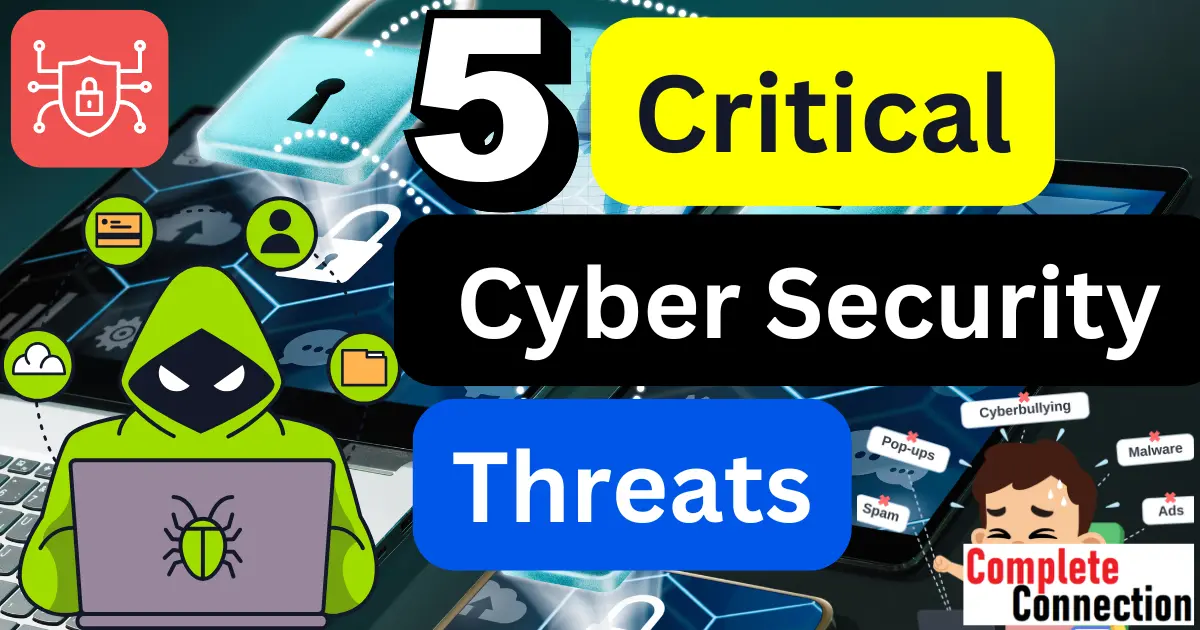Understanding Cyber Security Threats
Cyber security threats are a growing concern for businesses of all sizes. Contrary to popular belief, small businesses are just as vulnerable to cybercriminals as their larger counterparts. One common misconception amongst all business owners, is that their businesses are too small for cybercriminals to target, but that is anything but the truth.
As hacking becomes more and more automated, it makes it easier for hackers to target a large number of businesses all at once. The smaller businesses usually have less in way of cyber security threats, because they often have fewer resources and less time or awareness. This makes them prime targets for these kinds of people.
Even the smallest of businesses may generate significant amounts of revenue, or at least have a fairly substantial clientele base, which, under GDPR regulations, they are legally obligated to protect.
There are many things for business owners to consider, in the event that they are hit by a cyberattack, one such factor is company reputation.
For this reason, it’s important that individuals and organisations like Cybersecurity & Infrastructure Security Agency (CISA) or the National Institute of Standards and Technology (NIST) are aware of these threats, and the many things they can do to stop them. In this article, we will be looking specifically at 5 threats that businesses and individuals face.
1. Malware Attacks
What is Malware?
Malware is one of the biggest cyber security threats that businesses face nowadays. Such attacks encompasses a wide array of threats, such as viruses, Trojan horses, etc. Malware is a general term, which refers to malicious code that hackers typically use to gain unauthorised access to a network, which they’ll then use to either destroy or steal sensitive data. These malicious files are usually picked up from dodgy websites, spam emails or from connecting to an infected machine.
How Malware Can Affect Your Business
Malware attacks pose the biggest danger to smaller businesses, with they can cripple devices and entire network systems, which ends up costing hundreds, even thousands for replacements or repairs. They are also capable of giving the hacker back door access to any sensitive data, which can put both the employees and customers at risk. Smaller businesses tend to have work staff that oftentimes use their own devices for work, as this saves both time and money. However, this can increase the chances of the company suffering at the hands of a malware attack, as personal devices are much easier to compromise than business machines.
Prevention Strategies for Malware Attacks
To prevent such attacks, businesses can put in place the most effective and strongest levels of defence. Endpoint protection solutions is available to protect devices from a range of cyber security threats, including malware due to downloads from dodgy websites. It also provides company administrators with a central control panel, which can be used to manage all company devices, ensuring all security systems are working and are up-to-date. Web security is important because it stops end users, like employees, from visiting compromised websites, and downloading malicious files.
I suggest you go away and do your own independent research on endpoint protection, to learn how it can properly help you.
2. Denial of Service
Understanding DoS and DDoS Attacks
A Denial of Service (DoS) attack is another cyber security threats that entails flooding both networks and computers with random requests to cause it to crash. Distributed DoS (DDoS) attacks are similar, only they occur exclusively on network systems.
Real-World Impacts of DoS Attacks
A computer hacker will usually attempt to inundate a system with random requests in order to disrupt the handshake process. There are many other techniques that can be used, however. Some attackers may wait until a network is disabled (maybe for maintenance or repairs) to carry out their attacks.
Mitigating the Risks of DoS Attacks
A botnet is another kind of DDoS attack, which involves hundreds, thousands maybe even millions of systems being infected with the same malware which allows the hacker to control and use them for nefarious activity. Botnets are also sometimes referred to as Zombie systems, and are designed to target and overwhelm the processing capabilities of the target system or network server(s). Botnets can be very difficult to pin down.
3. Ransomware
The Rise of Ransomware: What You Need to Know
Today, ransomware is amongst the most common and lucrative cyber security threats, hitting hundreds, even thousands of different businesses every year. Ransomware entails encrypting the data of a target machine, so that it becomes inaccessible, and then forcing the victim to pay a ransom to regain access to it. This leaves the business (or individual) with a choice. Either they pay the ransom sum, or they loss the data forever.
The Ransomware Attack Process
In order to prevent these kinds of attacks Endpoint Protection is a must, and should be evenly distributed amongst every device that makes up the business. This should prevent or at the very least, make it difficult for hackers to carry out their ransomware attacks.
Best Practices for Ransomware Prevention
Additionally, businesses want to have a cloud based back-up solution in place, as this ensures the company’s data is safe from tampering, which in turn minimises data loss.
The main benefit of having accessible back-ups, that are up-to-date, is that the company, at any time, can recover their data, in the event of a ransomware attack. This means they’ll never have to pay a ransom, nor do they have to worry about lost productivity. This is a crucial and important component of improved cyber-resilience.
4. Insider Threats
What Are Insider Threats?
The insider threat is where actions of former employees, business contractors, employees or associates act in a manner that can cause harm to the business, whether that’s accessing sensitive data for malice or greed, or simply by being careless or ignorant of the cyber security threats.
The Impact of Disgruntled Employees
Because employees typically have access to the various company accounts, threats from an upset or disgruntled employee is a reality that can cause serious financial woes for the company.
Creating a Culture of Security Awareness
The most effective way to minimise insider threats is by ensuring the company has the right culture of security awareness in place. As this will help any employee easily spot when another employee decides to go rogue and compromise the data of the company.
5. Man in the Middle
How MITM Attacks Work
Man-in-the-middle (MITM) attacks occur when a cybercriminal positions themselves between a transactions between two or more parties. After they have compromised said traffic, they can now steal or filter the data.
Common Scenarios for MITM Attacks
MITM attacks occur more commonly when end users log into unsecured public Wi-Fi networks. A hacker will position themselves between the end user and the network, and then use malicious files to steal confidential information from the target machine.
Conclusion
Cyber security awareness is really important for all businesses today. As cyber threats keep getting smarter, it’s crucial to understand risks like malware, ransomware, and insider threats.
By focusing on security measures—like using endpoint protection, making regular backups, and training employees—businesses can significantly reduce their chances of falling victim to cyber security threats. Staying informed and being proactive doesn’t just protect valuable data; it also helps meet legal responsibilities, keeping both the business and its customers safe.
Investing in cyber security now can save you from major losses in the future.
Uchenna Ani-Okoye is a former IT Manager who now runs his own computer support website https://www.compuchenna.co.uk.

